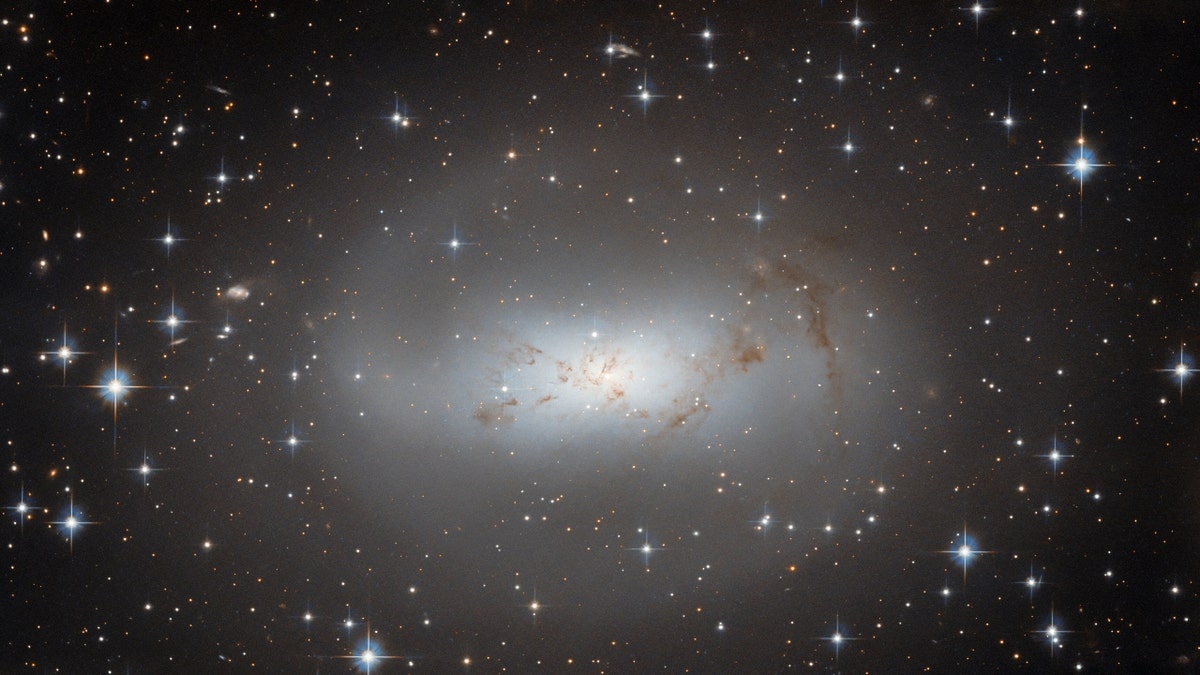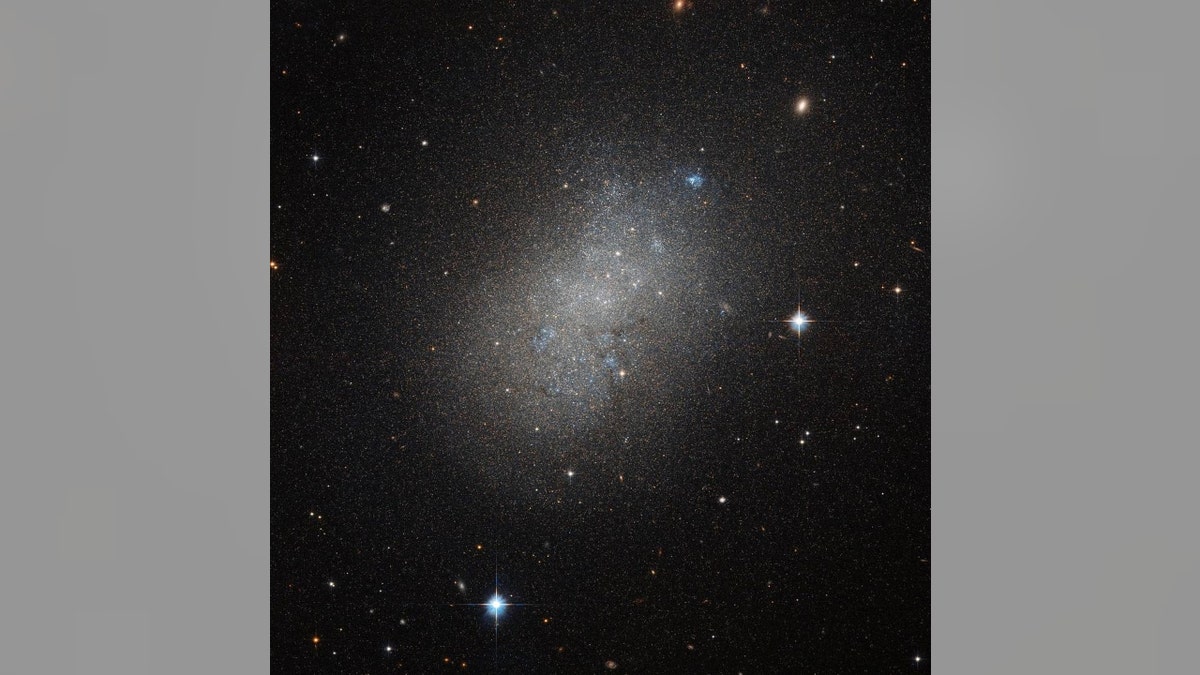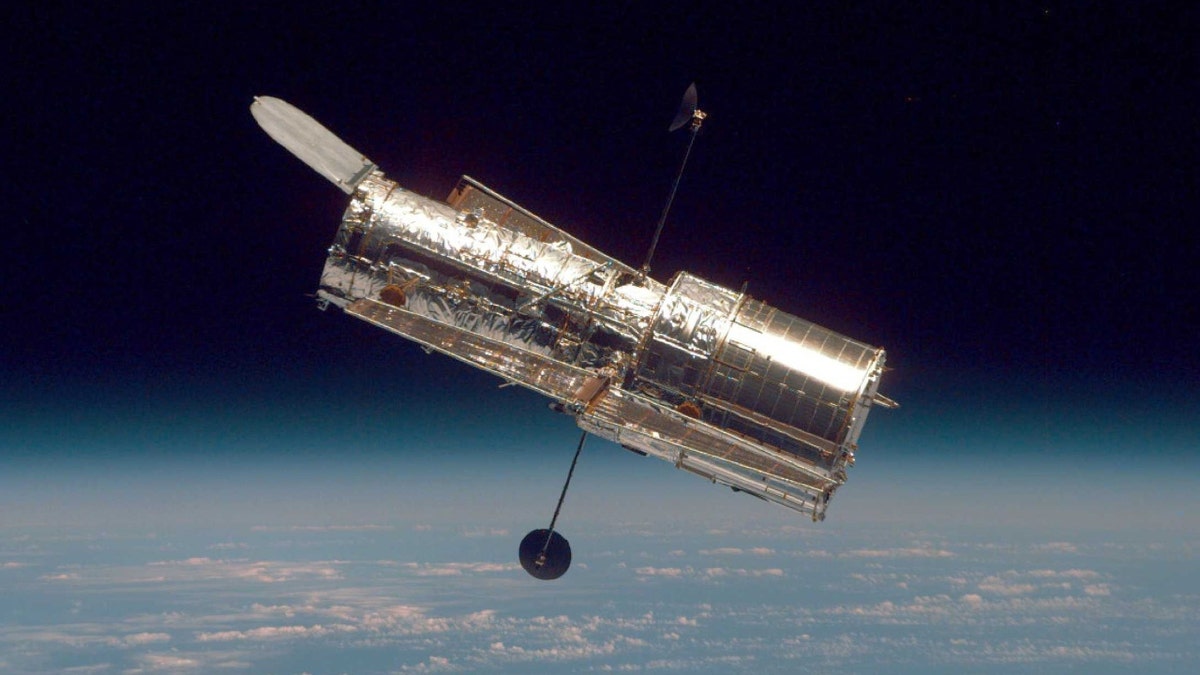The Hubble Space Telescope was deployed April 25, 1990
The Hubble Space Telescope reached space aboard Space Shuttle Discovery and soon began transmitting spectacular images back to Earth of the mysteries of the universe.
The Hubble Space Telescope has captured a neighboring galaxy located around 11 million light-years from Earth.
The highly irregular galaxy, ESO 174-1, resembles a hazy cloud against a dark backdrop illuminated by stars.
It is shown in an image consisting of a bright cloud of stars, dark gas and dust.
Irregular galaxies have strange shapes, like toothpicks or groupings of stars and range from dwarf irregular galaxies with 100 million times the mass of the sun to large ones weighing 10 billion solar masses.
ASTRONOMERS USING NASA JAMES WEBB SPACE TELESCOPE DISCOVER AN INTERCONNECTED WEB OF GALAXIES

The irregular galaxy ESO 174-1, which resembles a lonely, hazy cloud against a backdrop of bright stars, dominates this image from the NASA/ESA Hubble Space Telescope. ESO 174-1 is located about 11 million light-years from Earth and consists of a bright cloud of stars and a faint, meandering tendril of dark gas and dust. (Image credit: ESA/Hubble & NASA, R. Tully)
NASA says astronomers think such galaxies' shapes are sometimes the result of interactions with others and that some may have been formed by material pulled from such encounters or as the result of a mashup.
Scientists have also theorized that some large irregular galaxies could represent an intermediate step between spiral and elliptical galaxies.
The European Space Agency said the snapshot is a part of a collection of Hubble observations designed to better understand nearby galaxies.

The Hubble Space Telescope captured this image of NGC 5264, an irregular dwarf galaxy. (ESA/Hubble & NASA)
JAMES WEBB SPACE TELESCOPE DETECTS NEW CARBON COMPOUND IN SPACE FOR THE FIRST TIME
The observations aim to separate the stars and properties of every known galaxy within 10 megaparsecs.
A parsec unit is used by astronomers to measure distances to other galaxies. For example, 10 megaparsecs is about 32 million light-years.

In this handout from NASA, the Hubble Space Telescope drifts through space in a picture taken from the Space Shuttle Discovery during Hubble's second servicing mission in 1997. (NASA via Getty Images)
CLICK HERE TO GET THE FOX NEWS APP
As it is inefficient for the telescope to make back-to-back observations of objects in opposite areas of the sky, the program to capture all of our neighboring galaxies was designed to use 2-3% of Hubble time available between observations.
Programs like the one that captured this galaxy fill the gaps between other observations, the agency noted.










































